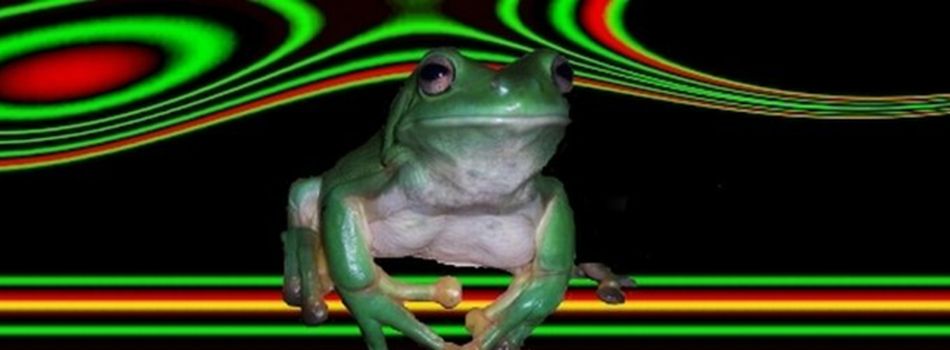Chytrid fungus (Batrachochytrium dendrobatidis) is a serious threat to green tree frogs and other amphibians. Prevention is far more effective than treatment, especially for pets and captive populations. Here are the best evidence-based steps you can take:
Prevention:
1. Quarantine New Frogs
- Always quarantine any new frogs for at least one month before introducing them to your existing collection. This helps prevent introducing chytrid or other pathogens to healthy frogs.
2. Maintain Strict Hygiene
- Regularly clean and disinfect all equipment, enclosures, and water sources.
- Avoid using harsh chemicals; use amphibian-safe disinfectants.
- Clean and dry all equipment and footwear before and between visiting frog habitats or handling different groups of frogs.
- Never use the same water, substrate, or equipment for different enclosures without thorough cleaning.
3. Optimize Habitat Conditions
- Keep enclosures clean, well-ventilated, and at appropriate temperature and humidity levels for green tree frogs.
- Ensure water quality is high-use dechlorinated, filtered, or boiled and cooled water, especially during cooler months.
- Regularly change water and clean tanks to prevent fungal buildup.
4. Limit Handling and Cross-Contamination
- Only handle frogs when absolutely necessary, and always use disposable gloves or thoroughly washed hands.
- Never move frogs from one area to another, as this can spread chytrid fungus to new locations.
- Do not release captive frogs into the wild.
5. Monitor for Symptoms and Act Quickly
- Watch for signs of chytrid infection: lethargy, loss of appetite, abnormal skin shedding, red or ulcerated skin, or unusual posture.
- If you suspect chytrid, isolate the frog immediately and consult a veterinarian experienced with amphibians.
- Early detection and treatment are critical for recovery.
6. Seasonal and Environmental Precautions
- Chytrid is more problematic in cooler temperatures. During winter or in cool conditions, take extra care with hygiene and water quality.
- If using natural ponds, consider draining small ponds for winter if feasible, or consult experts for larger water bodies.
7. Field and Biosecurity Measures (for Researchers and Visitors)
- Clean and disinfect boots, equipment, and vehicles before entering and leaving frog habitats.
- Carry cleaning utensils and disinfectant when visiting multiple sites.
Summary Table: Key Prevention Steps
| Prevention Step | Details & Actions |
|---|---|
| Quarantine | Isolate new frogs for at least 1 month |
| Hygiene | Disinfect equipment, clean enclosures, change water regularly |
| Habitat Management | Maintain optimal temperature, humidity, and water quality |
| Limit Handling | Use gloves, avoid unnecessary contact, never move frogs between sites |
| Monitor Health | Watch for symptoms, isolate and seek veterinary care if needed |
| Biosecurity (Field) | Clean boots, equipment, and vehicles between sites |
In summary:
Preventing chytrid fungus in green tree frogs relies on strict quarantine, excellent hygiene, optimal habitat conditions, minimal handling, and vigilant monitoring. Never move frogs between locations, and always disinfect equipment and footwear when working with multiple frog populations or habitats. Early detection and veterinary intervention are crucial if infection is suspected.
Treatment:
If a green tree frog is diagnosed with chytrid fungus, prompt treatment is critical. Several treatments have been tested, with varying degrees of success and safety:
1. Chloramphenicol Bath
-
Continuous shallow immersion in a 20 mg/L chloramphenicol solution for 14–28 days has been shown to cure both terminal and pre-symptomatic chytridiomycosis in green tree frogs.
-
Severely ill frogs may also require supportive care with electrolyte fluids and increased ambient temperature (up to 28°C) during treatment.
-
Frogs typically recover rapidly, showing normal activity and appetite within five days of starting treatment.
2. Antifungal Medications
-
Itraconazole baths (0.01–0.1% solution, daily for 8–11 days) are widely used and have cured chytrid in several amphibian species.
-
However, toxicity is a concern, and some frogs may not tolerate this treatment well, especially at higher concentrations or with repeated use.
-
-
Formalin-malachite green baths have also been used, but these carry risks of toxicity and require precise dosing and careful monitoring.
3. Supportive Measures
-
Electrolyte therapy: For very sick frogs, subcutaneous or oral electrolyte fluids can help correct imbalances caused by the fungus.
-
Temperature elevation: Raising the enclosure temperature to 28°C can slow fungal growth and support the frog’s immune response.
4. Experimental and Alternative Treatments
-
Some alternative treatments, such as rosemary tea baths and other antifungal agents, are under investigation, but their effectiveness and safety are not yet well established for green tree frogs.
Summary Table: Prevention and Treatment
|
Step |
Details |
|---|---|
|
Prevention |
Quarantine new frogs, strict hygiene, optimal habitat, water quality, limit handling |
|
Chloramphenicol |
20 mg/L bath for 14–28 days; effective even in terminal cases, with supportive care |
|
Itraconazole |
0.01–0.1% bath daily for 8–11 days; effective but risk of toxicity |
|
Supportive Care |
Electrolyte fluids, increased temperature (28°C), hydration, nutrition |
|
Monitor & Isolate |
Watch for symptoms, isolate affected frogs, consult a veterinarian |
In summary:
If infection occurs, the most effective and safest documented treatment is a chloramphenicol bath (20 mg/L for 14–28 days), often combined with supportive care and increased temperature. Itraconazole baths are also effective but must be used with caution due to potential toxicity. Early detection, isolation, and veterinary guidance are crucial for successful outcomes.

